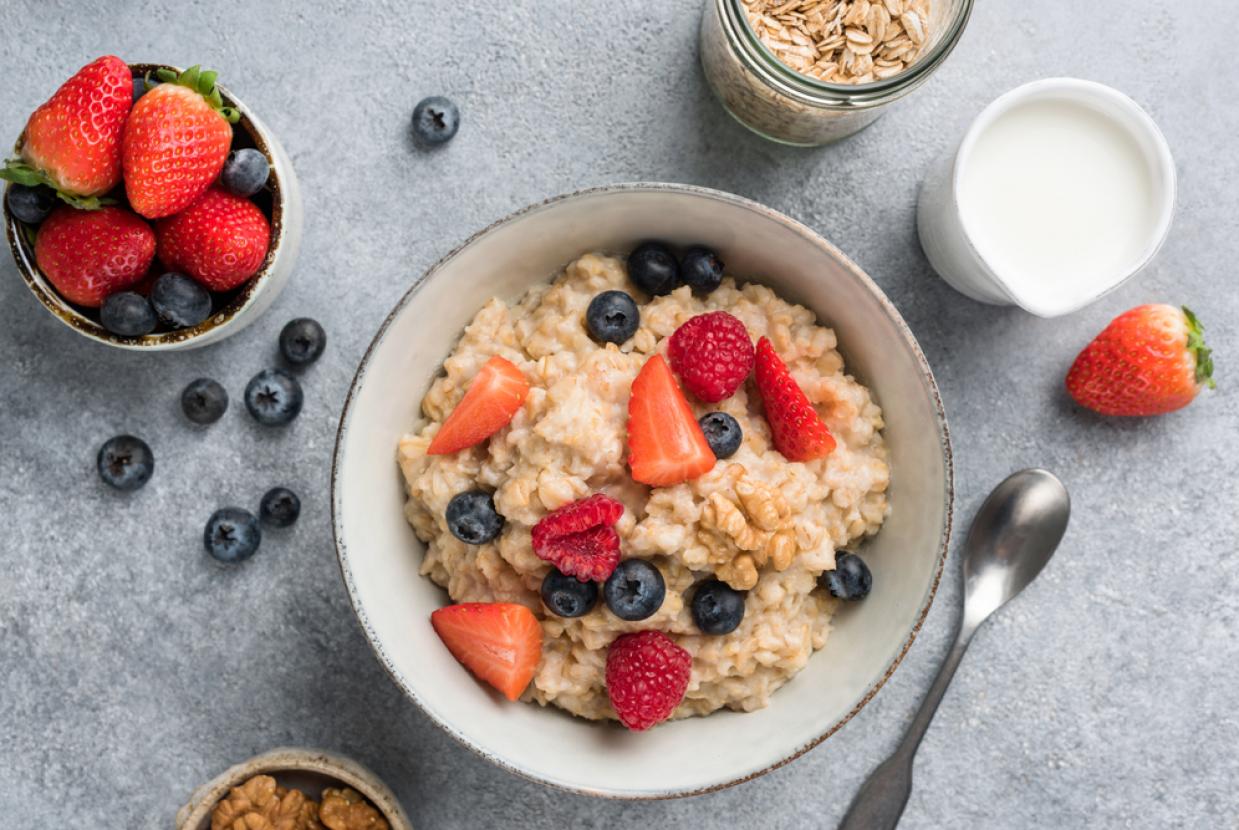What is Pre-Diabetes?
What is prediabetes?
Prediabetes means that your blood sugars are higher than usual, but not high enough for you to be diagnosed with type 2 diabetes. It also means that you are at high risk of developing type 2 diabetes. You are unlikely to be experiencing any symptoms with prediabetes.
Prediabetes is also sometimes called borderline diabetes. Higher than normal blood sugar levels can be detected via blood tests. The medical terms for higher-than-normal blood sugars are:
- impaired fasting glucose (IFG)
- impaired glucose tolerance (IGT)
- impaired glucose regulation (IGR)
- non-diabetic hyperglycaemia.
These tests are a mix of fasting or non-fasting and they all help your healthcare team to understand your risk of developing type 2 diabetes. So, if you’ve been told you have any of these, knowing this is the first step to being able to do something about it. And for many people there are things you can do to reduce your risk of type 2 diabetes.
Diagnosing prediabetes
We know that for some people hearing prediabetes can feel as though a diagnosis of type 2 diabetes is inevitable, but many people can reduce their risk of type 2 diabetes and it may be possible to prevent or delay the condition developing.
If you’re worried about prediabetes you could call your GP surgery and ask for a blood test. The most common test will be checking your HbA1c levels which is your average blood glucose (sugar) levels for the last two to three months. If your HbA1c level is between 42mmol/mol (6%) – 47mmol/mol (6.4%) this means it is higher than normal and you are at risk of developing type 2 diabetes.
Prediabetes symptoms
Prediabetes doesn’t have any symptoms. If you start to have any of the symptoms of type 2 diabetes it means you have probably already developed it.
So it’s important to know the risk factors and what support is available that could help you prevent or delay type 2 diabetes.
A lot of people don’t get any symptoms when it comes to type 2 diabetes, or don’t notice them. But you may notice:
- going to the toilet more often, especially at night
- feeling more tired than usual
- losing weight without trying
- genital itching or thrush
- cuts and wounds taking longer to heal
- blurred vision
- feeling extremely thirsty.
Causes of prediabetes
An estimated 6.3 million people are at an increased risk of type 2 diabetes in the UK based on blood sugar levels. We estimate that 1.3 million people are currently living with type 2 diabetes but are yet to be diagnosed
If you’ve been told you have prediabetes, this is a warning sign that you are at high risk of developing type 2 diabetes. The good news is you don’t have it yet, and with the right support up to 50% of cases of type 2 diabetes can be prevented or delayed.
Type 2 diabetes happens because insulin can’t work properly or the insulin your body makes doesn’t work properly, so your blood sugar levels keep rising. This means more insulin is released. For some people with type 2 diabetes this can eventually tire the pancreas out, meaning their body makes less and less insulin. This can lead to even higher blood sugar levels.
That’s why it’s very important to know the risk factors:
- You’re more at risk if you’re white and over 40 or over 25 if you’re African-Caribbean, Black African, or South Asian.
- You’re two to six times more likely to get type 2 diabetes if you have a parent, brother, sister or child with diabetes.
- Type 2 diabetes is two to four times more likely in people of South Asian descent and African-Caribbean or Black African descent.
- You’re more at risk if you’ve ever had high blood pressure.
- You’re more at risk of type 2 diabetes if you’re living with overweight or obesity.
The number of children and young people with type 2 diabetes in the UK is rising.
Other factors in your environment, like poverty or deprivation and inequality, may also increase your risk.
You are more at risk of developing type 2 diabetes if some or all of the risk factors apply to you. Our Know Your Risk online tool only takes a couple of minutes to complete. It is very important that you speak to your GP practice about having a blood test for diabetes as you can have type 2 diabetes for years without knowing
You could be eligible for a place on the Healthier You: NHS Diabetes Prevention Programme in England.
You may also be eligible for a free NHS Health Check which will check for health conditions including type 2 diabetes.
Preventing type 2 diabetes
Research has consistently shown that for some people combined lifestyle interventions - including diet, physical activity and sustained weight loss - can be effective in reducing the risk of type 2 diabetes by half.
Being at risk doesn’t mean you will definitely develop type 2 diabetes. Now is a great time to start making healthy changes to the foods you eat and your activity levels to reduce your risk of type 2 diabetes. Your healthcare team can support you in making these changes.
You can also call our helpline if you have any worries about being at risk of type 2 diabetes or for help with what to do next. And you could join our online forum to share your experiences with others who are at risk or have type 2 diabetes.
Here are some steps you can take to reduce the risk of developing type 2 diabetes in the future.
Manage your weight
If you are living with overweight or obesity and are at high risk of type 2 diabetes even small amounts of weight loss are really beneficial. Losing 5% of your body weight can significantly reduce your risk. There are lots of ways you can lose weight and it’s about getting the right support to find what works best for you.
If you need help with managing your weight a dietitian can help you. Your GP surgery can also help you find weight management services in your local area.
Eat a healthy, balanced diet
There’s no one special diet for all people at high risk of developing type 2 diabetes. Everyone is individual, so there isn’t a one size fits all way of eating for everyone. But, the food and drink we have in our overall diet is linked to our risk of developing type 2 diabetes.
For example, if your overall diet is made up of food and drinks that are in high fat, have a high GI (short for glycaemic index) and low fibre content, this is linked to an increased risk of type 2 diabetes. But the good news is that by changing some of your food and drink, you can reduce your risk of type 2 diabetes.
But what is a healthy and balanced diet anyway? All of these ways of eating have been linked with a decreased risk of type 2 diabetes:
- Mediterranean diet — check out our handy Mediterranean meal plans
- dietary Approaches to Stop Hypertension (DASH) diet
- vegetarian and vegan diets
- the Nordic diet
- moderately cutting down on carbohydrates.
This is because these diets are generally made up of healthy foods like fruits, vegetables, wholegrains and lean proteins and it’s the overall balance of our diet that is important in keeping us healthy.
So, to reduce your risk, aim to eat more of the foods linked with a decreased risk. Research has shown us that the following foods and drinks can be associated with a decreased risk:
- total fruit and veg intake (including specifically green leafy veg, blueberries, grapes and apples)
- wholegrains
- yogurt and cheese
- unsweetened tea and coffee.
Additionally, there are some foods we recommend reducing your intake of, as these have been associated with an increased risk. These foods include:
- sugar sweetened drinks
- red and processed meats (like beef, lamb, pork, ham and sausages)
- refined carbohydrates (like sugary snacks, white bread, sugary cereals)
- potatoes (particularly French fries).
Be more active
A sedentary lifestyle is when we spend a lot of time being inactive and not moving our bodies. Being sedentary is linked with an increased risk of type 2 diabetes.
So being active in your daily life can help to reduce your risk of type 2 diabetes. This doesn’t mean you need to take up a new sport or join the gym. You could make small changes so that you are being more active every day. Think about taking phone calls standing up, using stairs instead of the lift, doing some chair based exercises or going for a walk on your lunch break.































